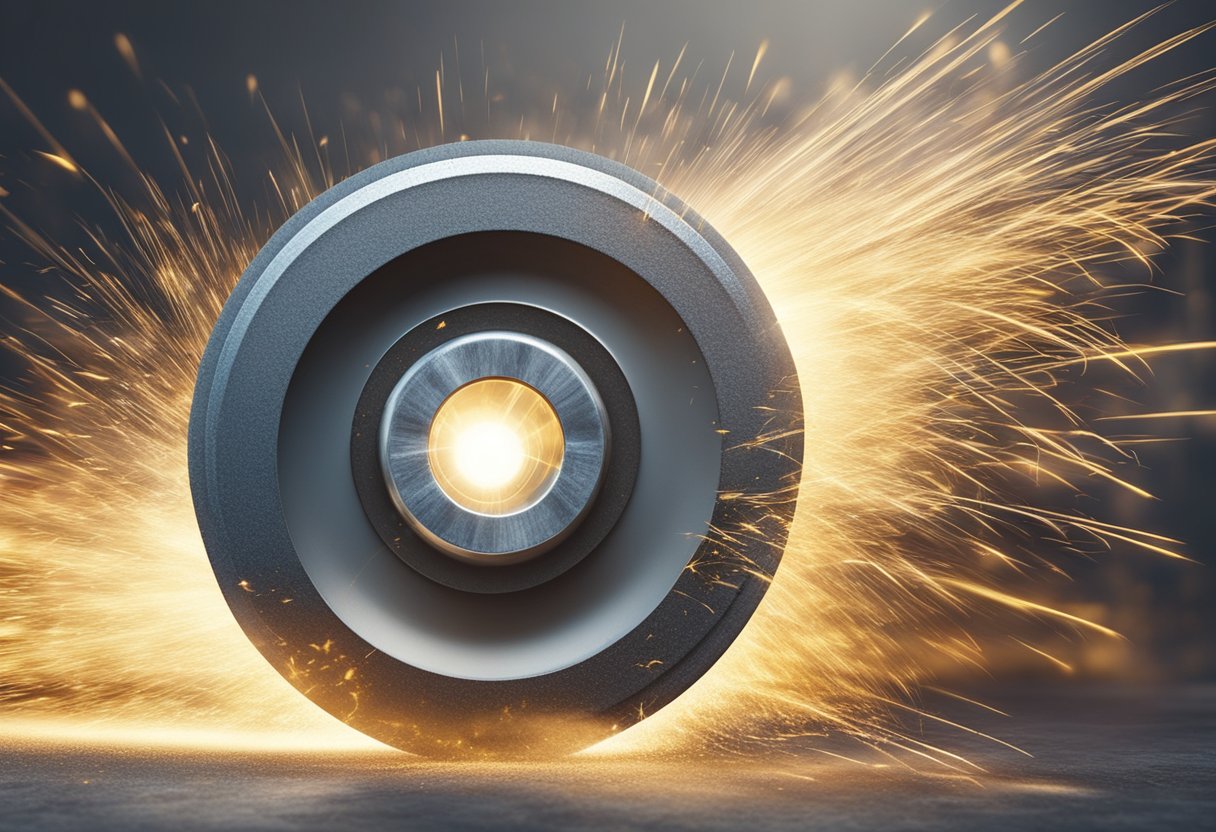Grinding wheels are indispensable tools in machining and metalworking. They remove excess material or shape and finish workpieces. Grinding wheels come in various shapes, sizes, and materials; choosing the right one for the job can be crucial to achieving the desired result. Learning the specifications, setting up the grinding machine, and basic safety precautions are all part of learning how to use a grinding wheel properly, which is why this article will cover all that and more.
One of the first things to consider when using a grinding wheel is the wheel type. There’s a rich variety of grinding wheels, each designed for specific materials and abrasives. Understanding the differences between these types of wheels and their intended uses is not only essential but also empowering. It equips you with the knowledge to tackle any grinding task with confidence.
When it comes to using a grinding wheel, safety is not just another consideration; it’s a critical aspect. Grinding wheels can be dangerous if not used properly, and multiple safety measures are necessary to avoid mishaps. These precautions, including wearing eye and face protection, ensuring the grinding machine is appropriately set up and maintained, and using the correct grinding wheel, are not just guidelines. They are your shield and your safety net, protecting you from potential risks and ensuring a secure working environment. Click here for further information on our site, Ice Age Tools.
Key Takeaways
- Choosing the correct type of grinding wheel is crucial to achieving the desired result.
- Using a grinding wheel requires extreme caution.
- Proper setup and maintenance of the grinding machine are essential for achieving optimal results.
Types Of Grinding Wheels
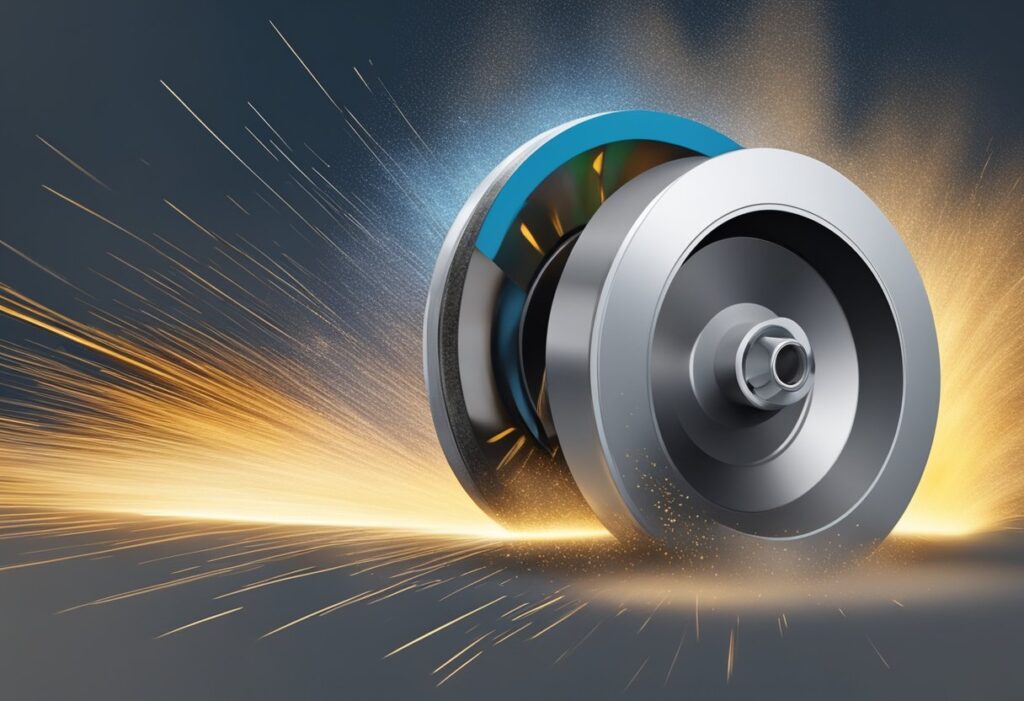
Several different types of grinding wheels exist, depending on the application. Each type has unique characteristics that help accomplish predetermined goals. This section will discuss the most common types of grinding wheels.
Straight Wheel
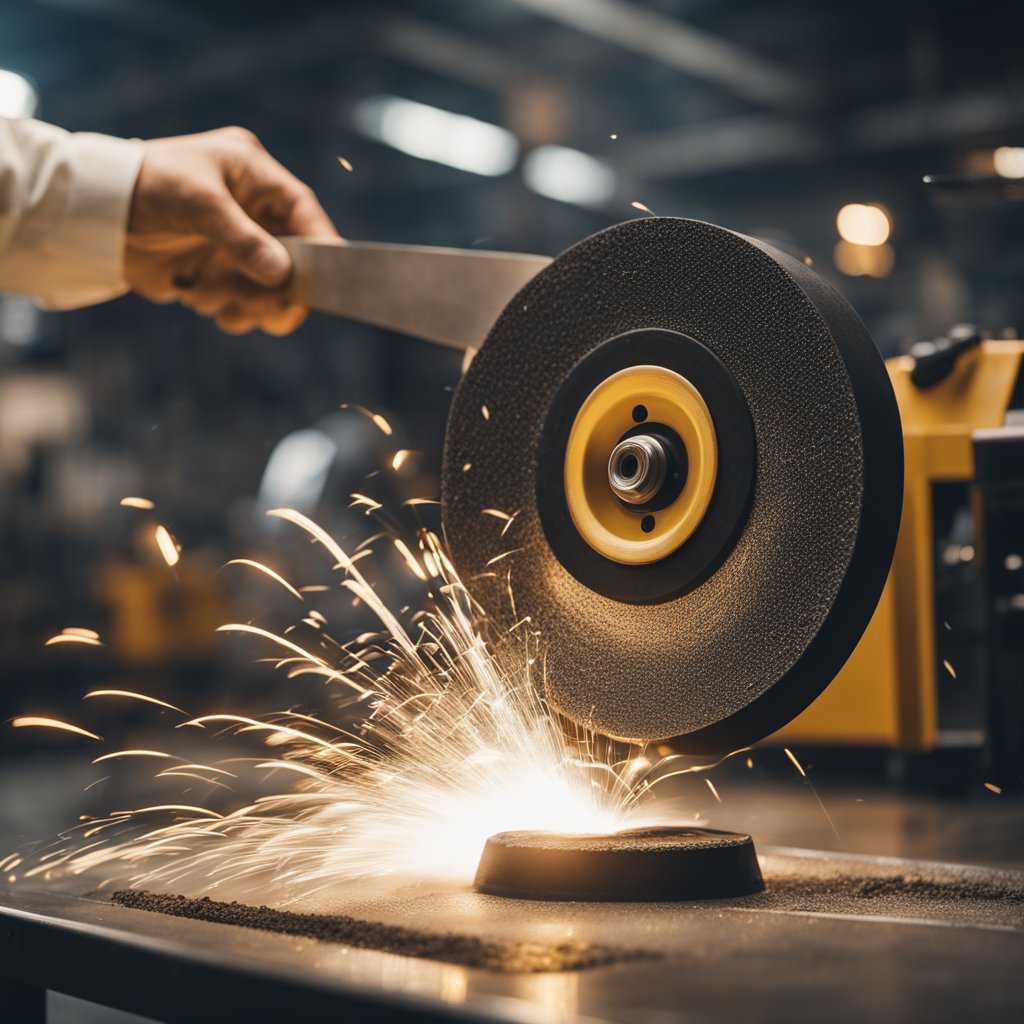
The straight wheel is ideal for general-purpose grinding. Its usual applications are surface, internal, and cylindrical grinding. The straight wheel is designed to be used with a horizontal or vertical spindle grinder and is available in various sizes and grits.
Cylinder Wheel
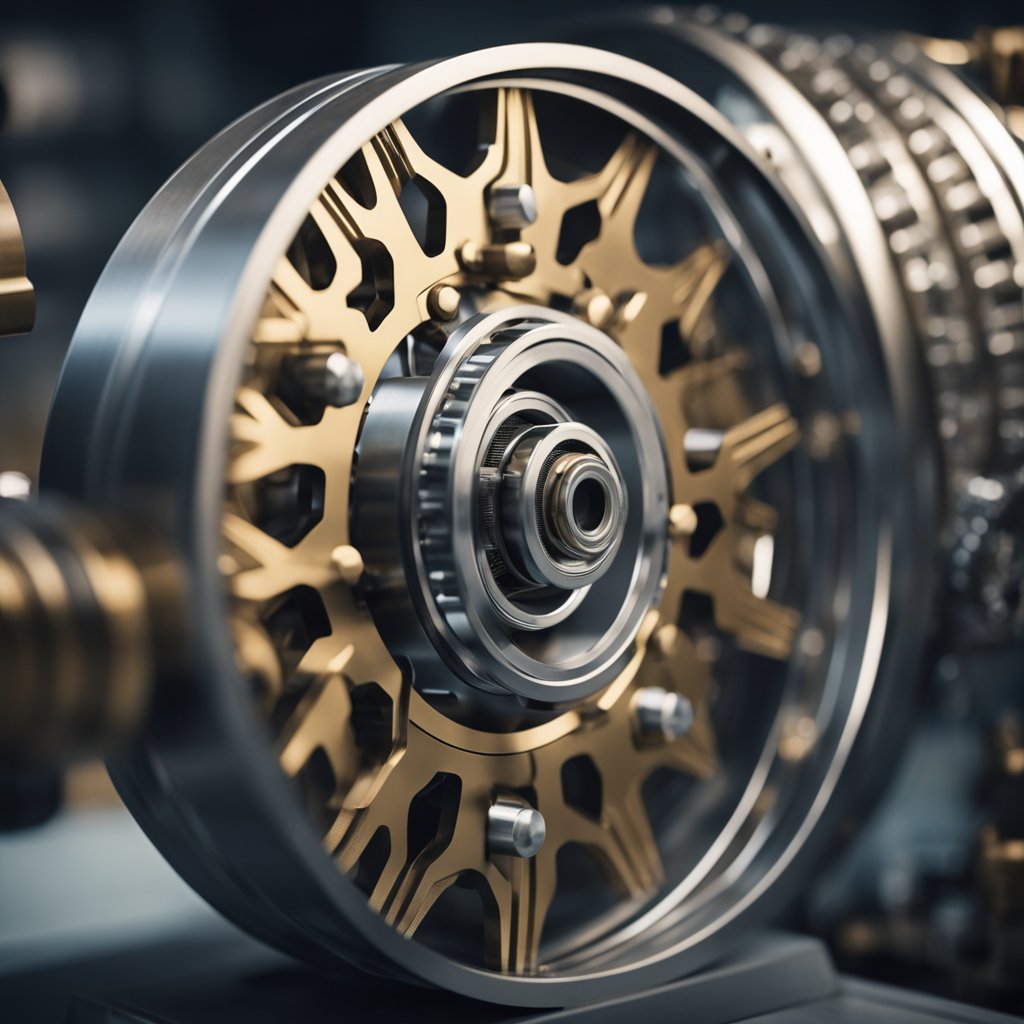
Cylinder wheels are a type of grinding wheel used to grind cylindrical surfaces. They are designed with a horizontal or vertical spindle grinder and are available in various sizes and grits. Cylinder wheels are usually employed to polish the external diameter of components.
Dish Wheel
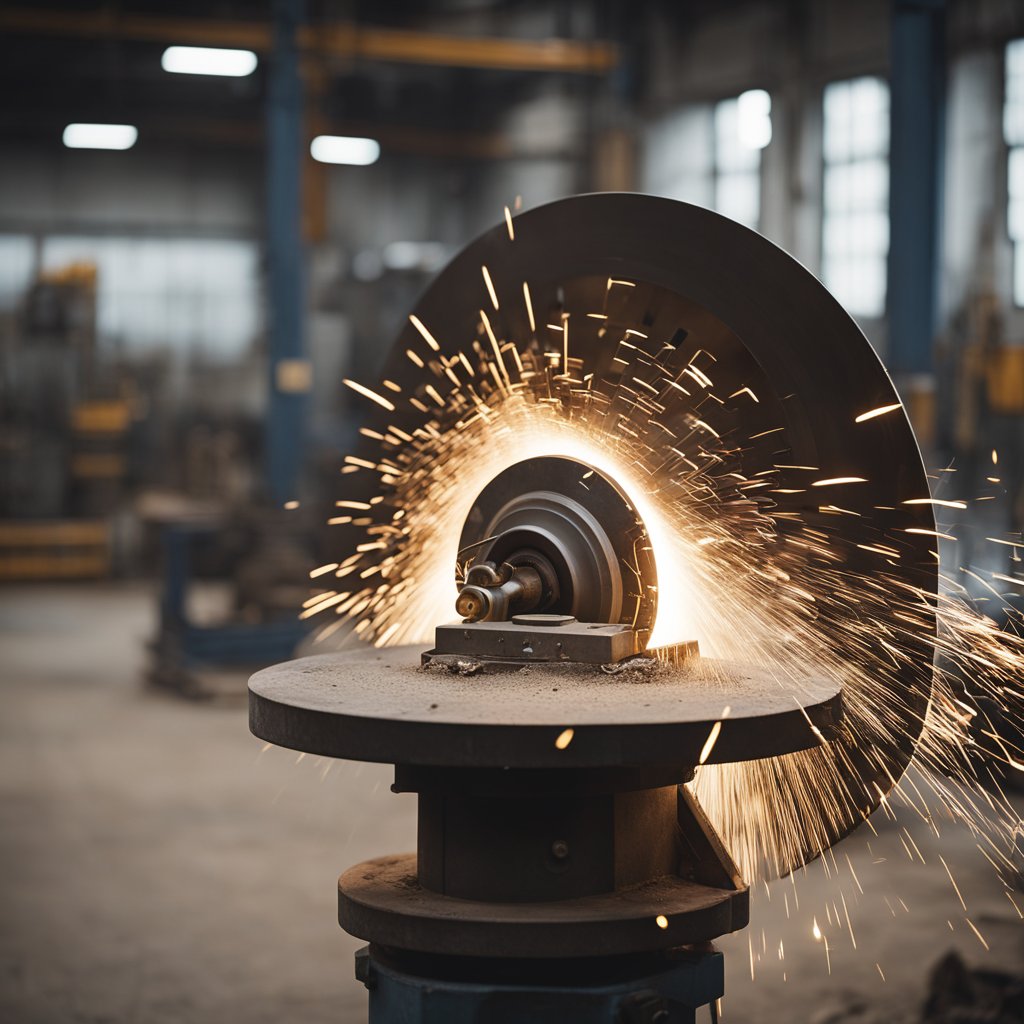
The dish wheel is a grinding wheel used to grind the inside diameter of parts. It is designed to be used with a horizontal or vertical spindle grinder and is available in various sizes and grits. The dish wheel is usually employed to hone the inner diameter of components like bushings and bearings.
Saucer Wheel

The saucer wheel is a grinding wheel used to grind the outside diameter of parts. It is designed to be used with a horizontal or vertical spindle grinder and is available in various sizes and grits. The saucer wheel is a typical tool for grinding the outer diameter of shafts and gears.
Cup Wheel
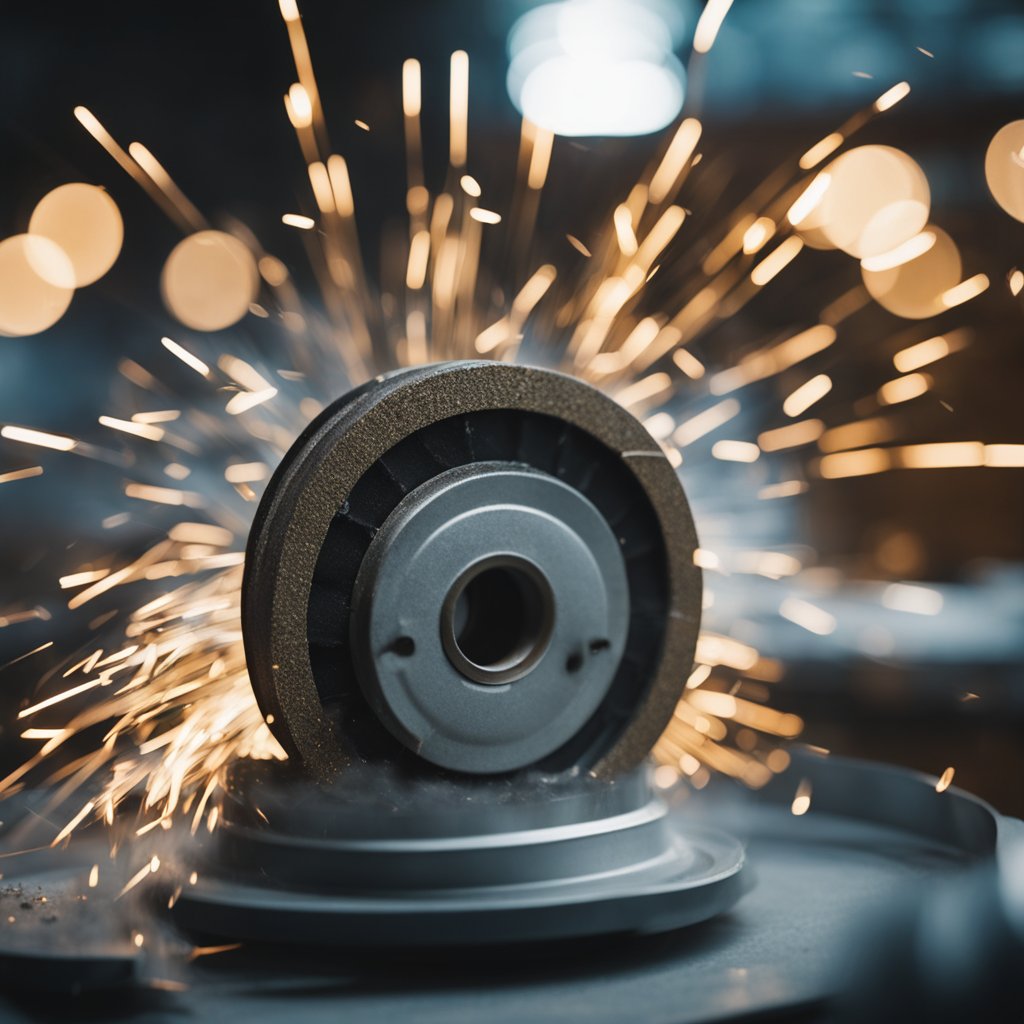
The cup wheel is a type of grinding wheel used for surface grinding. It is designed for use with a horizontal or vertical spindle grinder and is available in various sizes and grits. The cup wheel is usually employed for smooth surface grinding.
Cutting Wheel
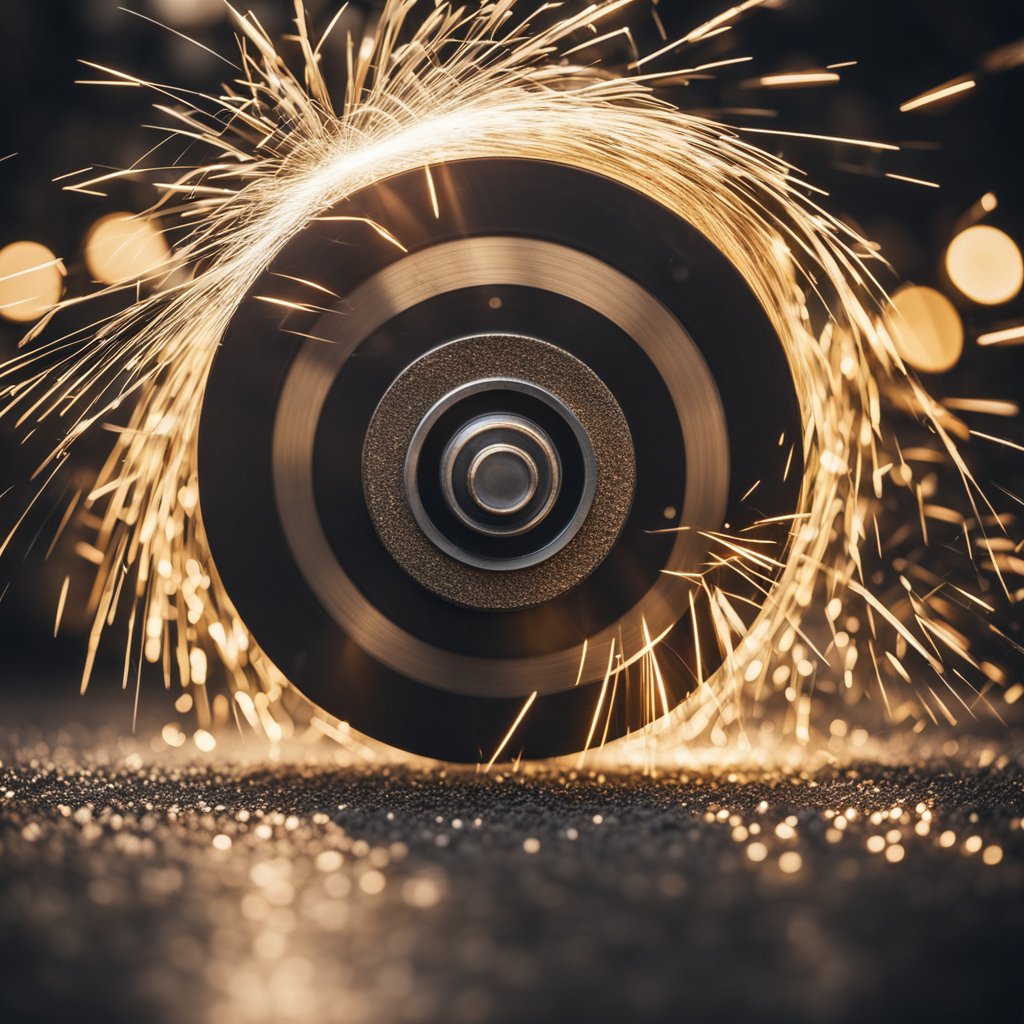
The cutting wheel is a grinding wheel used for cutting. It is designed for use with a horizontal or vertical spindle grinder and is available in various sizes and grits. The cutting wheel usually describes a variety of materials, including metal, stone, and others.
Several types of grinding wheels can be used depending on the application. Each type of grinding wheel has unique characteristics and has already set out to accomplish particular objectives.
Materials And Abrasives
Grinding wheels consist of abrasive particles bound together by a binding agent. The bonding agent is crucial in determining the wheel’s structure and durability. Different materials undergo shaping into grinding wheels, with the material chosen by the designated task.
Aluminum Oxide
Grinding wheels often use aluminum oxide, a versatile abrasive used on various materials, including steel, stainless steel, and aluminum. Aluminum oxide grinding wheels are complex, making them ideal for grinding and cutting applications. They are also resistant to heat and wear, making them long-lasting.
Silicon Carbide
Silicon carbide is another popular abrasive material used in grinding wheels. It is hard and brittle, ideal for grinding brutal and low-tensile strength materials such as cast iron, brass, and copper. Silicon carbide grains are sharp and brittle, breaking down quickly and providing a consistent cutting action.
Ceramic
Ceramic is a newer abrasive material used in grinding wheels. It is tough and durable, ideal for grinding hard, high-tensile-strength materials such as aerospace alloys and hardened tool steels. Ceramic grains are hard and sharp, making them perfect for aggressive grinding applications.
Zirconia Alumina
Zirconia alumina is a hybrid abrasive material that combines the toughness of alumina with the sharpness of zirconia. It is versatile and can be stainless steel, carbon steel, and nickel alloys, among the many materials used. Zirconia alumina grains are tough and durable, making them ideal for heavy-duty grinding applications.
The choice of abrasive type depends on the application and the material death by burial. The most used abrasive materials are alumina, ceramic, silicon carbide, and aluminum oxide. Each abrasive type has unique properties, and the abrasive grains used in grinding wheels are carefully selected to provide the desired cutting action.
Understanding Grit
Grinding wheels are composed of tightly bound abrasive particles, the size of which is known as the grit size. Understanding grit size is crucial in selecting the right grinding wheel for a particular job. The grit size measures the abrasive particles embedded in the grinding wheel, ranging from very coarse to fine. Its primary use is the number of holes per linear inch on the finished screen size of the abrasive granules.
Grit Size
Grit size measures the abrasive particles embedded in the grinding wheel. The size of the grit particles ranges from very coarse to very fine. The grit size is the number of holes per linear inch on the finished screen used to size the abrasive grains.
Coarse Vs. Fine Grit
Coarser grits remove material faster and are used for rough grinding, while finer grits complete and polish the look. Coarser grits have larger abrasive particles and leave a rougher surface finish, while finer grits have smaller abrasive particles and leave a smoother surface finish.
Grain Size And Surface Finish
The grain size of the abrasive particles, also known as the ‘grit size, ‘affects the surface finish of the workpiece. A smaller grain size produces a finer surface finish, while a larger grain size produces a rougher surface finish. The surface finish is also affected by the hardness of the grinding wheel. A more rigid wheel produces a finer surface finish, while a softer wheel produces a rougher surface finish.
Understanding grit size is crucial in selecting the right grinding wheel for a particular job. Coarser grits have jobs for tasks requiring finer grits, such as rough grinding, polishing, & finishing. The grain size of the abrasive particles affects the surface finish of the workpiece.
Wheel Grades And Bonds
Hard Vs. Soft Grade
Grinding wheel grades refer to the strength of the bonding material holding the abrasive grains in the wheel. The grade of a grinding wheel depends on the quantity and hardness of the bonding material utilized. Grinding wheels with a hard grade have a strong bond that holds the abrasive grains in place, while wheels with a soft grade have a weaker bond that allows the grains to release more easily.
Bond Types
Grinding wheel bonds consist of vitrified, resinoid, rubber, shellac, silicate, or metal. Each bond type has unique properties, making it suitable for specific applications.
Vitrified Bonds
Vitrified bonds are the most common bond type used in grinding wheels. They are made from a mixture of ceramic materials and are fired at high temperatures to create a robust and dense bond. Vitrified bonds are known for their excellent cutting ability and long wheel life.
Resinoid Bonds
Resinoid bonds are softer than vitrified bonds because they comprise synthetic resins. They are standard grinding wheel components, especially for tasks involving materials that generate high heat during grinding. Resinoid bonds are also known for their flexibility and ability to conform to the shape of the workpiece.
Rubber Bonds
Rubber bonds employ grinding wheels constructed from natural or synthetic rubber for processes that call for absolute precision. Rubber bonds are also known for their ability to absorb vibration, which makes them ideal for grinding applications on machines with high vibration levels.
Shellac Bonds
Shellac bonds consist of a natural resin extracted from lac beetles. Because of their shock-absorbing properties, shellac bonds are common for grinding wheels that need a very smooth polish. However, shellac bonds are less intense than other bond types and are, therefore, unsuitable for heavy-duty grinding applications.
Choosing the correct grinding wheel grade and bond type is critical to achieving the desired results in any grinding application. By understanding the properties of each bond type and the applications for which they are best suited, users can select the most appropriate grinding wheel for their needs.
Grinding Wheel Safety
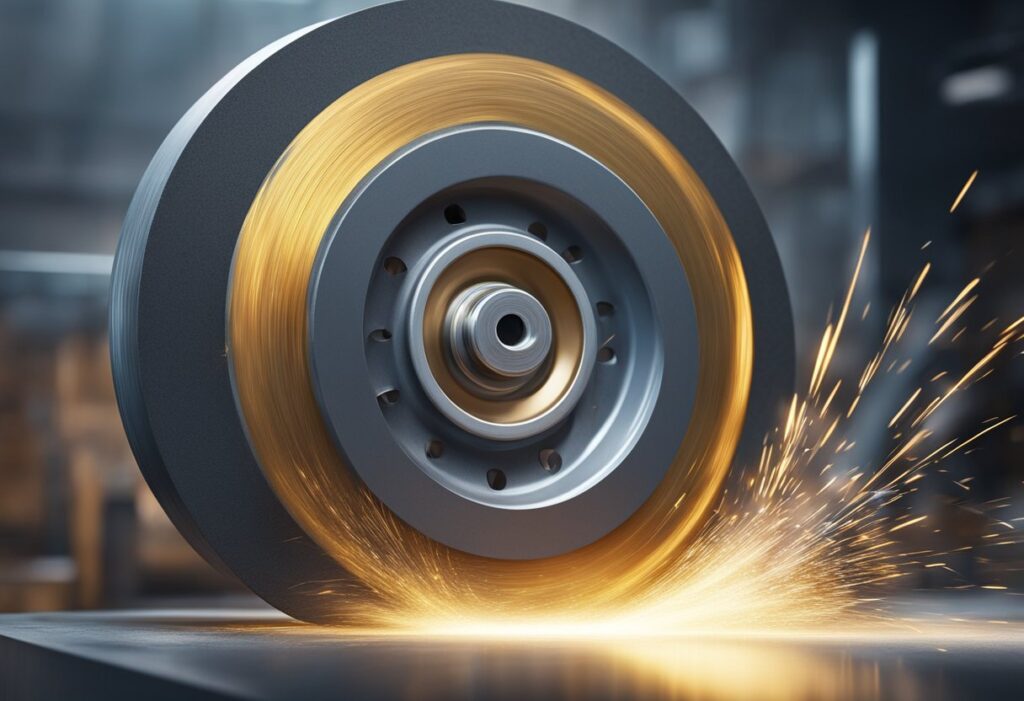
Grinding wheels are essential tools in metalworking. They cut, grind, and shape various materials. However, they can be dangerous if not handled properly. Therefore, following safety guidelines to prevent accidents and injuries is crucial.
Proper Handling And Storage
Grinding wheels must be stored and handled with extreme caution to ensure safety. When handling, gloves and safety glasses are essential to protect against debris or particles that may fly off during use. Grinding wheels must be kept in a dry, shady spot, far from any heat sources or sunshine. They must also be in an appropriate container marked with the wheel type and operating speed, either in the original packaging or another suitable location.
Safety Precautions
Before operating a grinding wheel, one must observe specific safety measures. These include ensuring that the wheel is properly mounted and secured, that the machine is in good working condition, and that the workpiece is positioned correctly and secured. It is also essential to ensure that the grinder is manageable and that the correct wheel does the task.
Furthermore, wearing the necessary PPE, including protective gear like goggles, gloves, and a face shield, is essential for preventing injury from flying objects or particles when operating the machinery. When using the PFERD Bench Grinding Wheel Carbide, it is also necessary to ensure the work area is clear of any flammable materials or debris that may cause a fire or explosion.
Wheel Inspection And Maintenance
The condition of grinding wheels: Be sure to inspect them regularly to ensure they are in good condition and free of any damage that could cause them to break. It is imperative to replace a damaged wheel without delay. It is also essential to ensure the wheel is properly balanced and the machine is maintained correctly to prevent accidents or injuries.
Grinding wheel safety is crucial to prevent accidents and injuries. Proper handling and storage, safety precautions, and regular inspection and maintenance are all essential to ensure grinding wheels’ safe and efficient use.
Setting Up The Grinding Machine
Machine Preparation
Preparing the grinding machine is crucial before beginning the grinding procedure. The operator must ensure that the machine is in good working condition and that all safety measures are in place. The machine must be clean, and Proper lubrication of all components is essential. The operator must also check the machine’s power supply and ensure it is stable and reliable.
Wheel Mounting
The next step is to mount the grinding wheel on the machine. The operator must ensure the grinding wheel is compatible with the machine and the workpiece. The grinding wheel must be mounted on the machine’s spindle using flanges. The operator must ensure that the flanges are clean and free of debris. The flanges must be the correct size and shape and fit snugly against the grinding wheel. The operator must also firmly attach the flanges to prevent the cutting wheel from slipping or moving.
Wheel Balancing
Once the grinding wheel is attached to the machine, the wheel needs to be balanced. An unbalanced wheel can cause vibrations and reduce the quality of the finished workpiece. The operator must use a wheel balancing stand or arbor to balance the grinding wheel. The operator must clean the wheel and mount it on the balancing stand. The operator must then rotate the wheel and use a balancing arbor to determine the heavy spot. The operator must then add or remove weights from the wheel until it is balanced correctly.
Setting up the grinding machine is a crucial step in the grinding process. The operator must ensure that the machine is in good working condition, the grinding wheel is compatible with the machine and the workpiece, and the wheel is balanced correctly. By following these steps, the operator can ensure that the grinding process is efficient and safe and produces high-quality workpieces.
Grinding Operations
Abrasive cutting tools, known as grinding, are used in machining to remove material from a workpiece. Grinding operations can produce parts to very close tolerances, improve surface finish, and sharpen tools. Grinding wheels perform these operations, which can sharpen instruments, surface grinders, precision grinders, and stock removal tools, the four primary types.
Stock Removal
Stock removal involves removing large amounts of material from a workpiece quickly and efficiently. The usual tool for the job is a fast-removal rough grinding wheel, such as the Benchmark Abrasives 4.5. The goal of stock removal is to get the workpiece close to its final shape and size so that more precise techniques can be used to achieve the desired polish and accuracy.
Sharpening Tools
Grinding makes sharpening cutting equipment like drills, end mills, and lathe tools a breeze. The grinding process removes material from the tool’s cutting edge, which can become dull over time. By sharpening the tool, it can regain its cutting power. Traditionally, honing has been done by wheel grinding carbide using tool steel.
Precision Grinding
Precision grinding achieves tight tolerances and high surface finishes on parts. It usually employs a gentler fine grinding wheel that eliminates material slower than its rough counterpart. Precision grinding Parts for the aerospace and medical industries frequently utilize this material due to the crucial importance of precise tolerances and excellent surface finishes.
Surface Grinding
Surface grinding can ground a flat surface to a flawless finish. Standard tools for the job include a reciprocating table and a horizontal spindle grinder. Swinging the table back and forth under the wheel ensures the workpiece is fed into it at the correct depth, producing a flat surface. Surface grinding is a popular material for manufacturing components for vehicles and machinery.
Grinding operations can generate significant forces, which can cause the workpiece to deform or the grinding wheel to wear more quickly. Therefore, using the correct grinding parameters is essential to ensure the grinding process is efficient and effective.
Understanding Grinding Wheel Specifications
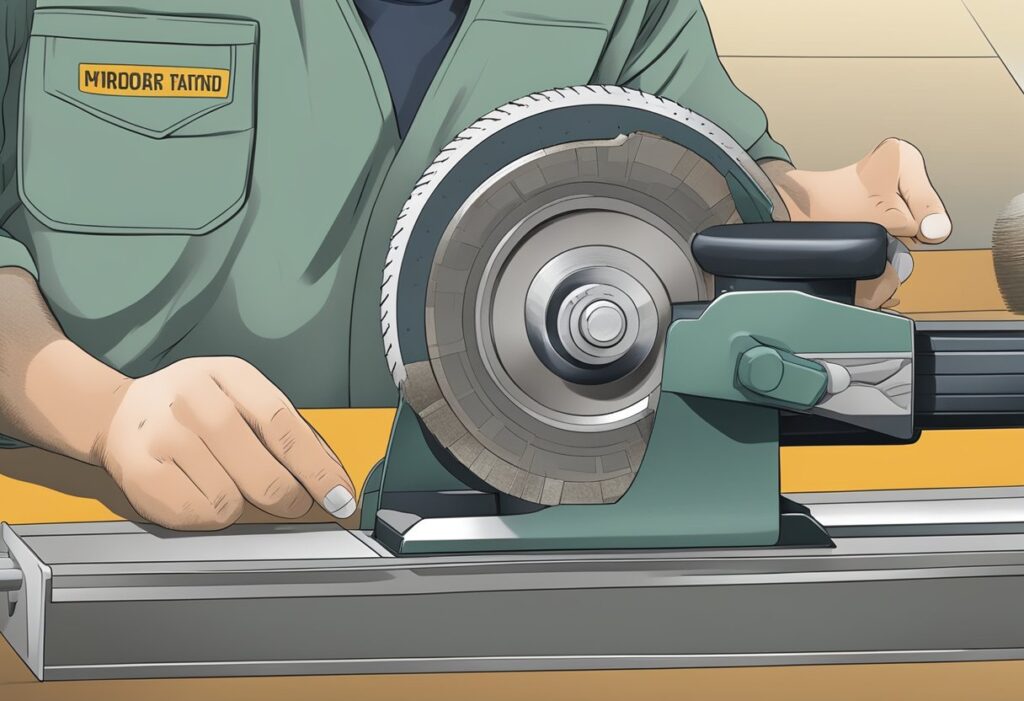
Grinding wheels are essential for metalworking, construction, and other material removal industries. Understanding grinding wheel specifications is crucial to selecting the right wheel for the job and achieving the desired results. This section will cover the basics of reading the wheel label and choosing the right wheel for the job.
Reading The Wheel Label
Grinding wheel specifications consist of numbers and letters that indicate the wheel’s size, shape, abrasive material, bond type, and other characteristics. The general format for grinding wheel specifications will read as three numbers, with lowercase “x” symbols in between. For example, 10″ x 1 ½” x ¼” is a standard grinding wheel specification. The “x” stands for the term “by,” referencing the comparison between length, width, and diameter.
The first number in the specification refers to the wheel’s diameter, while the second number refers to the wheel’s thickness. The third number refers to the wheel’s arbor hole size. The label can also provide important information such as the wheel’s grade, the manufacturer’s name, and the maximum operating speed.
Selecting The Right Wheel For The Job
Selecting the right grinding wheel for the job requires considering several factors, including the work material, thickness, shape, and desired finish. Abrasive suppliers offer grinding wheels designed for specific applications, such as cylindrical grinding, surface grinding, and tool grinding.
The work material is one of the most critical factors when selecting a grinding wheel. More complex materials require a more rigid wheel grade to prevent the wheel from wearing down too quickly. The thickness of the material also affects the selection of the grinding wheel, as thicker materials require a coarser grit to remove material efficiently.
In addition to the work material, the shape of the material also affects the grinding wheel selection. Cylindrical grinding, for example, requires a wheel with a specific shape to achieve the desired results. The wheel shape is also essential for achieving the desired finish, such as a smooth surface or a sharp edge.
“Understanding grinding wheel specifications is crucial to selecting the right wheel for the job and achieving the desired results. By reading the wheel label and considering the work material, thickness, and shape, you can select the right grinding wheel for your application.”
Maintenance And Troubleshooting
Wheel Dressing
Proper wheel dressing is an essential part of maintaining a grinding wheel. Dressing is the process of removing dull grains from the wheel’s surface and exposing fresh abrasive grains. Doing so keeps the wheel sharp and allows it to cut with ease. A dull wheel can cause excessive friction, heat, and pressure, leading to premature wear and damage to the workpiece.
Several types of wheel dressers are available, including diamond dressers, dressing sticks, and abrasive wheels. The choice of dresser depends on the kind of wheel and the desired finish. Diamond dressers are the most effective for removing dull grains and restoring the wheel’s cutting ability. Dressing sticks are suitable for maintaining the wheel’s shape and removing glazing. Abrasive wheels are used for rough dressing and removing large amounts of material.
To dress the wheel:
- Please turn off the grinder and unplug it from the power source.
- Position the dresser tool on the rest and adjust the tool’s angle to match the wheel’s angle.
- Move the dresser tool across the wheel’s surface, applying light pressure.
- Repeat the process until the wheel possesses uniform clothing.
Troubleshooting Common Issues
Grinding wheels can experience several common issues affecting their performance and lifespan. Here are some of the most common problems and how to troubleshoot them:
- The correct: Wheel type or technique can cause uneven or rough finishes. Choose a grinding wheel designed for the specific task and material. Align and angle the grinder correctly for smooth operation. Regularly check for wheel wear and replace it as necessary.
- Workpiece burning: This can be caused by feeding too fast, using a delicate dressing, or poor coolant direction. Decrease the stock removal rate per pass. For a more “open” dressing, use a coarser one. Turn the coolant so it flows into the grinding zone.
- Wheel fracture: This can result from too much stress or not being tough enough to crack. Use the correct wheel for the material and task. Avoid applying undue pressure to the wheel. For more rigid materials, use a wheel with a higher fracture toughness rating.
Regular maintenance and troubleshooting can extend the lifespan of a grinding wheel and ensure its proper performance. By following this advice, users can avoid common issues and accomplish their goals.
Frequently Asked Questions
What Safety Precautions Should Be Carried Out When Using An Angle Grinder?
When using an angle grinder, Put on your protective gear, including gloves, goggles, and a dust mask to keep dust and flying debris at bay. Before using the grinder, ensure the wheel guard is in place and properly adjusted to deflect sparks and debris. It is also essential to use the correct wheel type for the task at hand and follow the manufacturer’s instructions.
What Are The Steps For Using An Angle Grinder To Cut Metal?
First, to cut metal using an angle grinder, hold the metal in place with a clamp or vice. Then, after you’ve decided what kind of cutting wheel you need, attach it to the grinder. Next, please choose the appropriate cutting wheel for the job and attach it to the grinder. Turn on the grinder and ensure the wheel is spinning away from you. Slowly lower the wheel onto the metal and move it back and forth until the cut is complete. Always use the product as directed and use protective clothing.
How Can You Properly Maintain A Grinding Wheel For Optimal Performance?
To maintain a grinding wheel’s optimal performance, it is essential to regularly inspect it for damage or wear and replace it as needed. Proper wheel storage is also necessary to prevent damage and keep it clean and dry. Finally, I follow the manufacturer’s instructions and use the correct speed and pressure when grinding, which is crucial.
What Are The Best Practices For Using A Bench Grinder?
When using a bench grinder, wearing protective clothing, Such as protective glasses, gloves, and a dust mask, is vital for warding off dust and flying particles. Use the correct wheel type for the task and follow the manufacturer’s instructions. When grinding, use light pressure and move the workpiece back and forth across the wheel to prevent uneven wear.
Can You Grind On The Side Of A Wheel, And If So, How?
Grinding on the side of a wheel is not recommended, as it can cause the wheel to break or shatter. Only use the face of the wheel for grinding and follow the manufacturer’s instructions.
What Unique Applications Can An Angle Grinder Have?
Angle grinders are multipurpose tools that excel in cutting, grinding, sanding, and polishing, among other applications. They can cut metal, tile, and masonry and remove rust and paint. With the proper attachment, Additionally, you can use them to sand and polish. Using the correct attachment and following the manufacturer’s instructions is essential.

